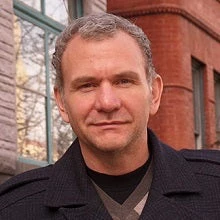 © shutterstock.com
© shutterstock.com
The World Bank has revised its estimates of global poverty to reflect new data on prices and national poverty lines from more than 160 countries in the world. The revisions to the global poverty estimates suggest that more people have escaped extreme poverty over the last decades, yet the world is poorer than we thought. The international poverty line of $2.15 (in 2017 prices) has been updated to $3.00 (in 2021 prices), leading to an upward revision of the population in extreme poverty by 125 million people in 2022. The poverty lines more relevant for middle income countries have been updated from $3.65 (in 2017 prices) to $4.20 (in 2021 prices) in the case of lower-middle-income countries and from $6.85 (in 2017 prices) to $8.30 (in 2021 prices) in the case of upper-middle-income countries.
By answering three questions below, this blog summarizes the main results of our working paper that documents the detailed analysis behind these new poverty lines and estimates.
1. What factors explain the changes in the poverty lines?
New price information and standards of poverty around the world.
In 2024, the International Comparison Program published new data on purchasing power parity (PPP) conversion factors for the reference year of 2021 using price data collected from 176 countries. PPPs are price indices that measure the cost of goods and services in a country relative to the United States, which serves as the reference country. Unlike market exchange rates, PPPs account for the fact that living costs are typically lower in poorer countries (which is driven by non-tradable services), so that the value of a dollar (i.e., how much it can actually purchase) is equalized across countries. With each release of new PPP data, the World Bank updates its official poverty lines, as part of its mandate to monitor global poverty (SDG 1.1).
A second crucial input into the World Bank’s global lines are the national poverty lines defined by countries to measure poverty within their boundaries. When the 2017 PPPs were released in 2020, the Bank compiled and harmonized 1,381 national poverty lines from 157 countries, to set its poverty lines of $2.15, $3.65 and $6.85. In this update, the database has been expanded to 1,747 lines covering 163 countries, which form the basis of the new poverty lines of $3.00, $4.20 and $8.30. Compared to the higher lines, the international poverty line (i.e., the lowest line) increases substantially by more than 40% to $3.00. While there have been updates to the underlying data, the Bank’s methodology for setting its poverty lines has remained unchanged. One poverty line is selected for each country, the line that is closest in time to the ICP reference year. The median poverty line of low-income countries is the international poverty line (which is the World Bank’s measure of extreme poverty), while the median poverty line of lower- and upper-middle-income countries define the higher poverty lines (see Table 1).
Table 1: Global poverty lines
Although the Bank’s methodology has not changed, more timely national poverty lines have been used to set the new global poverty lines. In particular, the median poverty line from low-income countries is 1 year behind the 2021 ICP reference year, compared to 3 years behind the 2017 ICP reference year. These new poverty lines also reflect improved methods of measuring consumption and poverty in low-income countries, mostly in West Africa. These countries now have better measures of household consumption, including better measures of nonfood consumption. When consumption measures change, the national poverty standards also need to be adapted. Therefore, these revised lines do not reflect rising ambitions of what it means to be non-poor but largely reflect better measured cost of basic needs in the poorest countries of the world.
Our working paper provides more information on the different sources of changes in the global poverty lines, not only for low-income countries, but also other income groups. While the international poverty line is largely driven by upward revisions in the poverty line of the typical low-income country, the lines typical of lower- and upper-middle-income countries are driven by both new national poverty lines and purchasing power parities.
2. How do these new poverty estimates change what we know about global poverty trends and levels?
More people have escaped extreme poverty over the last decades, yet the world is poorer than we thought.
3. How do these new poverty data change what we know about the distribution of poverty across different groups of countries in the world?
Extreme poverty has shifted from South Asia to Sub-Saharan Africa and fragile states.
The new poverty data suggest that the global population living in extreme poverty has shifted away from South Asia to Sub-Saharan Africa. South Asia’s share of the extreme poor reduces from 19 percent to 12 percent in 2025, while the share of Sub-Saharan Africa increases from 69 percent to 73 percent (see Figure 1).
Figure 1: Regional shares of the global poor in 2025 (percent)
At the higher poverty line typical of upper-middle-income countries, poverty is distributed more evenly across the regions of the world, with limited changes in the regional shares previously estimated. At this standard, about a third of the global poor live in Sub-Saharan Africa, while about 41 percent of the global poor live in South Asia.
Fragility is a key driver of the growing concentration of extreme poverty in Sub-Sharan Africa. Figure 2 shows the distribution of poverty across Sub-Saharan Africa and/or countries in fragile, and conflict-affected situations (FCS).
Figure 2: Regional concentration of global poor over time
In 2000, about one-quarter of the extreme poor lived in a country in Sub-Saharan Africa or one that was fragile. However, by 2025, the share of the extreme poor in Sub-Saharan Africa or fragile, and conflict-affected countries has increased to more than three-quarters. By 2030, the share of poor in FCS and/or Sub-Saharan Africa is forecast to grow to more than four-fifths.
The authors gratefully acknowledge financial support from the UK Government through the Data and Evidence for Tackling Extreme Poverty (DEEP) Research Program.






Join the Conversation